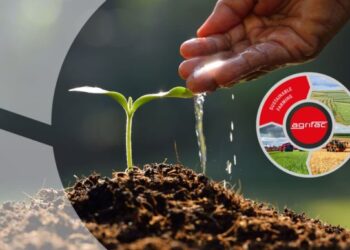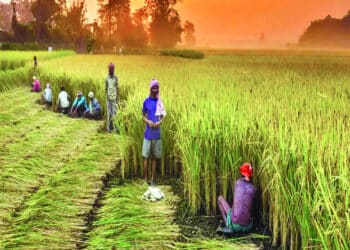Growth in agriculture is said to be 200% more effective in increasing prosperity and income than any other sector.
Recently, to provide a more holistic and inclusive picture according to the World Agricultural Production data by the United States Department of Agriculture and the data for production quantities of All commodities by USDA as the main sources.
Following are the rankings of The Top 5 Agriculture Producing Countries on the dataset for 2019 production quantities of all commodities which include, fruits, crops, coarse grains, dairy, and oils production quantities :
1. China
China, a big agricultural country endowed with rich agricultural resources, has a long history of farming and the tradition of intensive cultivation as well as a huge rural population.
The Chinese government has always placed a high priority on the development of agriculture. Chinese Government Prioritizes Productivity Growth.
China has had remarkable success in developing its agriculture sector since the Opening and Reform period began in 1978.

Since 1978, the percentage of China’s population that depends on agriculture for a living has declined from 70 percent to 35 percent.
2. United States
About 40 percent of the land in the United States is used for agriculture of some form, including livestock grazing.
This includes 431.1 million acres of cropland, 396.9 million acres of pasture, and 71.5 million acres of forests. Half of U.S. agriculture revenue is from meat production. 4 Most of this is cattle, dairy, poultry, hogs, and eggs.
A smaller proportion is bison, rabbits, sheep, goats, and ostriches. The United States is the world’s largest beef producer. Moreover, It has a very large domestic market and is the world’s largest exporter of agricultural products.

Indeed, the share of US agricultural production exported is more than double that of any other US industry and the trade surplus in agricultural products acts as an important stimulus to the US economy.
3. Turkey
Turkey is the world’s 7th largest agricultural producer, and a top producer and exporter of crops ranging from hazelnuts and chestnuts to apricots, cherries, figs, olives, tobacco, and tea.
Agriculture is Turkey’s largest employer, representing 25% of the workforce, and contributes 8% of the country’s economic activity.
Nevertheless, Turkey is one of the few countries in the world that is self-sufficient in terms of food. The country’s fertile soil, access to sufficient water, a suitable climate, and hard-working farmers, all make for a successful agricultural sector.

4. India
India is the second-largest producer of wheat and rice, the world’s major food staples.
India is currently the world’s second-largest producer of several dry fruits, agriculture-based textile raw materials, roots and tuber crops, pulses, farmed fish, eggs, coconut, sugarcane, and numerous vegetables. India is an agricultural country.
Agriculture and its allied activities act as the main source of livelihood for more than 80% population of rural India.

It provides employment to approximately 52% of labor. India is self-sufficient in a number of food crops including rice and wheat, which are among the national staples, and there is enough food to meet demand.
5. Brazil
Agriculture is an important industry in Brazil, as this country has immense agricultural resources available to it. Its most significant products in this sphere are coffee, soybeans, wheat, rice, corn, sugarcane, cocoa, citrus, and beef (in order of importance).
Major agricultural products are coffee, sugar, soybeans, manioc, rice, maize, cotton, edible beans, and wheat.

Brazil produces about 20 billion liters of milk per annum and is the sixth or seventh largest world producer. Brazil, with its extensive land area, abundant sunlight, and natural resources, is certainly no exception.
The agricultural sector represents more than four percent of the annual value added to Brazil’s gross domestic product and accounts for a nine percent share of the total employment in the country.
Also, Checkout: EARTH DAY 2022: HISTORY, SIGNIFICANCE, THEME, HOW WE CAN CONTRIBUTE TO SAVE OUR MOTHER EARTH
Source: TheAgrotechDaily
















